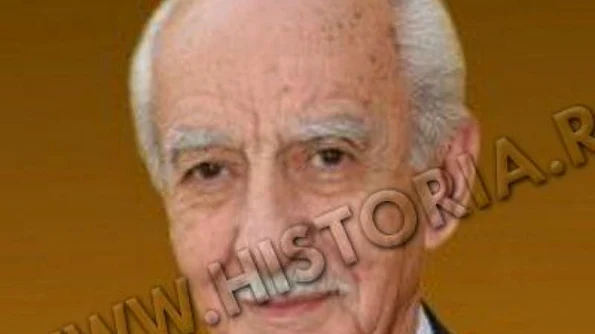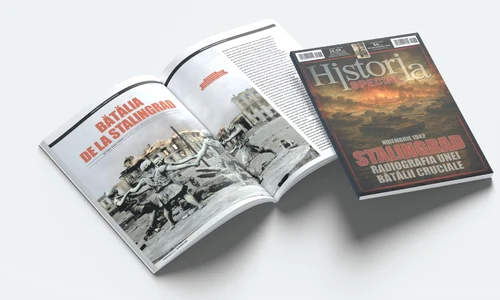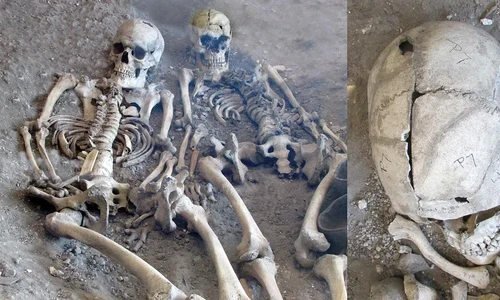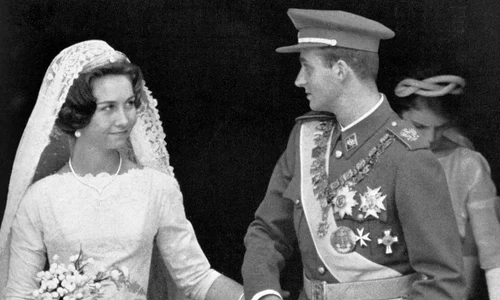
The Spies’ Dynasty: The Incredible Story of the Soviet Spy Who Saved Churchill’s, Roosevelt’s and Stalin’s lives
Gevork Vartanian was the Soviet spy who contributed to the failure of a Nazi plot to kill the Allied leaders during the WW2. Ill with cancer, Vartanian was found dead in his Moscow apartment on January 10th, 2012.Vartian led a remarkable life. He was born on February 17th, 1924 in the Southern Russian city of Rostov-on-Don. He followed his father’s example and became a Soviet agent at the tender age of 16.
He was given the codename “Amir” and his main designated task was to uncover the German and British spies;and he excelled at doing so. Not only did he manage to uncover 400 German spies between 1940 – 1941, according to the Russian Foreign Intelligence Service (SVR), but also he infiltrated the MI-6 and was allowed to take part in a British espionage training course in Tehran.
Yet, his claim to fame dates from November, 1943 when he saved the lives of the Allied leaders at the Tehran Conference in Iran. Vartanian led a group that was entrusted with the mission of blocking the attack that was supposed to be carried out by a special German team of agents at the Inter-Allied Conference. The German agents were captured and forced to send false messages to Berlin which led to the abandonment of the attack. Surprinsingly, Vartanian was only 19 when he managed to save the Allied leaders’ lives. Subsequently, the Soviet movie Tehran 43was made in honour of the November 1943 events.
In an interview for Ria Novosti in 2007, Vartanian recounted in detail the way he managed to defeat the German spies. Vartanian thought he succeeded, because “he luckily had never met a defector.”
His wife was also a Soviet spy and after the WW2, they worked together for more than 30 years. According to the SVR, as part of their cover, Vartanian and his wife were married several times in different places. Gevork Vartanian retired from the SVR in 1992 and continued to train younger agents.
Vartanian’s wife Goar received the Russian President Dmitri Medvedev’s condolences in which he described the ex-agent as a real patriot. Medvedev mentioned that Vartanian took part “in genial special operations which became a part of the nation’s Foreign Intelligence Service history”.Vartanian was awarded the highest Soviet decoration – the Medal which recognized him as a Hero of the USSR. He died at the age of 87.
However, besides Gevork Vartanian, the USSR had benefited during the WW2 from the assistance of another two super spies who changed the outcome of the last world war:Rudolf Roessler and Richard Sorge.
“Lucy” and the Wehrmacht
Rudolf Roessler’s espionage network codenamed “Lucy” received the professionals’ most respectful admiration. Lucy was based in Lucerne and was active between 1939 and 1943.
Stalin received from Lucy an unexpected Christmas gift in 1940:the complete dossier on the invasion of the USSR codenamed Plan Otto (which was subsequently renamed Barbarossa).
At the time, there were only nine copies of the Plan Otto and Roessler worked for more than 12 hours to break its code. He needed another 48 hours to telegraph Kremlin the complete number of pages from the Otto file. However, Stalin kept the dossier hidden and presented it only to the minister of the NKVD, (the secret political police) LavrentiyBeria. The Chief of Red Army Staff Georgy Zhukov confessed that neither he nor the Defence Minister Semyon Timoshenko were aware that Stalin received the Barbarossa Plan six months prior to the Nazi invasion.
Stalin was recorded saying to the chief of the Foreign Espionage Service of the Red Army (GRU):“Don’t tell me what you believe. Give me the facts and their source!”.This is the proof that the Soviet leader possessed the Barbarossa dossier for a long time. Yet, Rudolf Roessler did not disclose his source, since this was the precondition he imposed on the receivers of his espionage activities – the Swiss, British and Soviet Governments. Roessler took to the grave the names of his sources from the Wehrmacht High Command (OKW). Initially, Stalin perceived Roessler as a German agent provocateur and refused to take into consideration the fact that his information may be authentic. Yet, he changed his opinion after the Nazi invasion.
The Lucy network took pride in the fact that it helped the Red Army win the Stalingrad and Kursk Battles. Lucy gave important and unprecedented details in the history of the military art. Everything was included in Roessler’s radiograms:the Soviet sectors of the front which would be the main targets of the Wehrmacht, the number of the soldiers and the fighting technique used by the Nazis. He also disclosed the exact location of the German command centers and the biggest ammunition, food and fuel supply deposits. Only the “Center” army group needed 18.000 tons of daily supplies which were the equivalent of 36 goods train! Roessler divulged the Wehrmacht’s capital weakness:the logistics of the daily supplying 3 million German soldiers with tons of ammunition, fuel and food supplies!
Richard Sorge – The Spy Who Saved the USSR
Richard Sorge was one of the most prominent German journalists of the 1940s and Nazi party members. Inside the Third Reich, he was known as a notorious drunkard and womanizer, however, he was actually an officer of the Foreing Intelligence Service of the Soviet Army (GRU). Sorge was, most likely, the most important Soviet spy in Asia. In a letter sent to the GRU on June, 1stthat „The war between the Germans and the Soviets would begin around the 15thof June, according to the information sent from Berlin by the lieutenant-colonel Scholl to ambassador Ort.”Moscow answered „It is suspicious to receive such provocative telegrams.” Stalin contemptuously ignored another advertisment sent by Sorge because it came from „a piece of shit who built a few small factories and brothels in Japan to make a living.”
Yet, Sorge continued to spy on the Germans and after the Nazi attack on Moscow, the Soviet authorities began to take into consideration his reports. In just a few months, the man who is considered the most important spy of the WW2 managed to provide the Kremlin with the proper information it needed to block the Nazi attack on Moscow and to change the course of war.
Military historians consider that Sorge’s greatest achievement was informing the Kremlin that Japan would not attack the USSR and would head south towards China. This important strategic information led to Stalin’s cardinal decision of May, 26th, 1941 that he would transfer 250.000 soldiers from Siberia to Moscow, in order to fight against the German troops. In the opinion of the Western military historians, these 250.000 soldiers saved Moscow from the German siege while taking part in General Zhukov’s counteroffensive.
These Siberian soldiers had not participated previously in the war and were dressed appropriately for the winter, whereas the soldiers of the Reich had summer uniforms at a temperature of more than – 40 degrees Celsius. It was Germany’s first great military defeat and it immensely influenced the European political stage. Because of this, the Battle for Moscow was the most important event of those times. Seven million combatants were waging war against each other under the severe conditions of a very harsh winter (even for the Soviets). In the history of military art, the second place is taken by the 1942 Battle of Stalingrad which concentrated four million combatants. The Battle for Berlin is third on the list which consisted of 3, 5 million soldiers.
It is also worth mentioning that the Kremlin lost 926.000 soldiers in the Battle of Moscow, a number equal to the combined number of Anglo-American WW2 losses. Without Sorge’s contribution, Moscow could have fallen in German hands. Also, there would have been unforeseeable consequences whereas the war’s duration and the winners’ fate were concerned. Let’s not forget that the Soviet Government, all of USSR’s administration and the Diplomatic Corps were evacuated from Moscow to Kuybyshev. All this because only very few thought that Moscow would be able to resist the German troops that occupied Paris.















